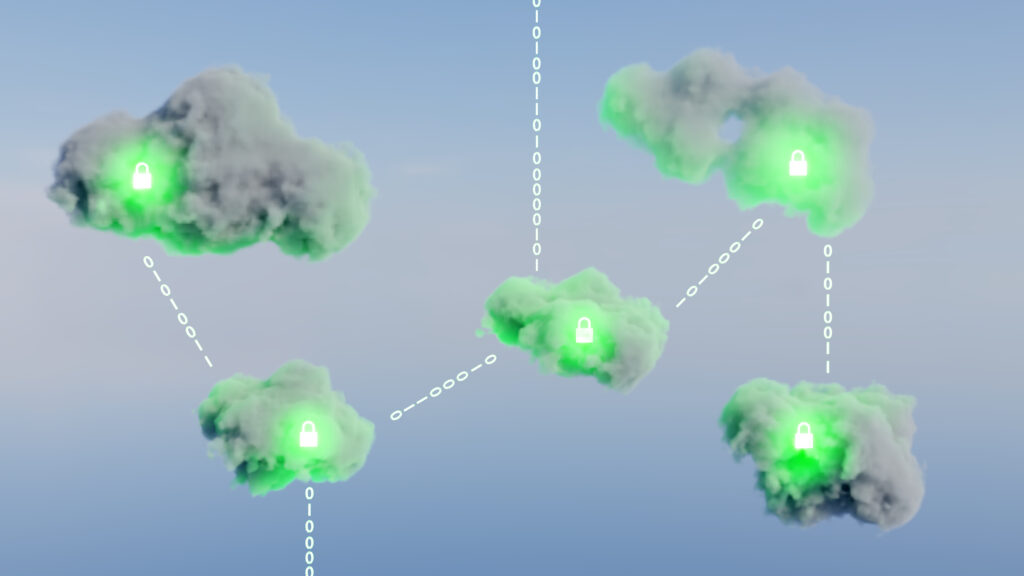As organizations increasingly turn to cloud services, managing identity and access management (IAM) in a cloud environment has become a critical aspect of a robust cybersecurity strategy.
Cloud IAM security combines technology, policies, and procedures to control user access to cloud resources and to ensure that only authorized users can access sensitive data and applications.
Why IAM is Important for Cloud Security
IAM is instrumental in securing cloud environments, primarily by regulating access control. It handles user identities and their access permissions, ensuring that the right individuals have the right access to the right resources at the right times for the right reasons. The cloud IAM security challenges are plenty, and handling them effectively is a top priority for cybersecurity teams.
On-premises, IAM is quite well-established. However, in the cloud, where resources can be on-demand and spread across multi-cloud environments, the IAM landscape becomes more complex. That’s where Tufin’s cloud-native security solution can help. By providing an automated approach to IAM, it mitigates risks associated with manual processes and ensures effective access control.
IAM in AWS, GCP, and Azure: More Than Just Permissions
IAM in AWS, GCP, and Azure is about more than just permissions. It’s a comprehensive approach that helps security teams maintain a strong security posture across their entire cloud environment.
Multi-factor authentication (MFA), single sign-on (SSO), and least privilege principle are among the many IAM policies these cloud providers use to bolster cloud security. They limit the attack surface, reducing vulnerabilities, and aiding in prevention against data breaches.
IAM also assists with lifecycle management. Automating IAM roles and entitlements helps in seamless provisioning and de-provisioning of access rights, helping to avoid excess permissions, a common cause of security breaches.
Check out Tufin’s Cloud Native Solution to explore how to automate IAM, optimizing security workflows in cloud environments.
Cloud IAM Security Best Practices
- Strong Authentication: Implementing multi-factor authentication (MFA) is key. This adds an additional layer of security by requiring users to present two or more pieces of evidence (or factors) to prove their identity.
- Least Privilege Access: Limit user access to the bare minimum they need to perform their duties. This principle of least privilege (POLP) helps to minimize the attack surface.
- Automate IAM Policies: Manual management of IAM policies can lead to errors and security risks. Automating IAM with tools like Tufin’s network security change automation can significantly mitigate these risks.
- Regular Audits: Regularly review and update access rights to prevent entitlement creep, where users accumulate more access privileges over time.
For more cloud IAM security best practices, check out our webinar on cloud security.
The Future of IAM in Cloud Security
The future of IAM in cloud security is about more than just managing access. It’s about ensuring security across the lifecycle of a user’s interaction with cloud resources, and automating where possible to reduce human error.
As companies are migrating to the cloud and adopting DevOps workflows, IAM solutions need to evolve to meet these new demands. Leveraging machine learning and artificial intelligence, future IAM systems will offer more granular access control and make real-time decisions based on behavior patterns.
Incorporating IAM in your cybersecurity strategy can be a daunting task. However, with Tufin’s native cloud solution, ensuring comprehensive IAM cloud security is within reach.
Conclusion
IAM cloud security is a crucial component of an effective cloud security strategy. As the cloud infrastructure continues to grow and evolve, so does the need for robust IAM solutions. By implementing strong authentication protocols, adhering to the principle of least privilege, automating IAM policies, and conducting regular audits, organizations can fortify their security posture and protect their sensitive data in the cloud.
FAQs
What is IAM cloud security?
IAM cloud security refers to a set of practices, technologies, and policies used to manage digital identities and control access to cloud resources. It is a crucial aspect of cloud security that ensures only authorized users can access specific resources.
To learn more about cloud security, check out our blog post on cloud security configuration.
Is IAM part of cloud security?
Yes, IAM is a crucial part of cloud security. By defining and managing roles and access rights for individual network users, IAM ensures that the right people have access to the right resources at the right times.
For a deeper dive into IAM’s role in cloud security, refer to our post on micro-segmentation strategies.
How is IAM useful in securing the cloud?
IAM is useful in securing the cloud by managing and limiting access to sensitive data and applications. It ensures that only authorized individuals can access specific resources, mitigating the risk of data breaches.
For practical examples of IAM in action, read our post about a zero trust model.
Wrapping Up
With businesses migrating their workloads to cloud environments and using cloud services for diverse purposes, safeguarding cloud resources has become paramount. An essential component of a strong cloud security strategy is IAM cloud security. Understanding its role and implementing best practices is key to maintaining a secure and efficient cloud environment. See how we can help secure your cloud infrastructure by signing up for our free demo today.
Ready to Learn More
Get a Demo





